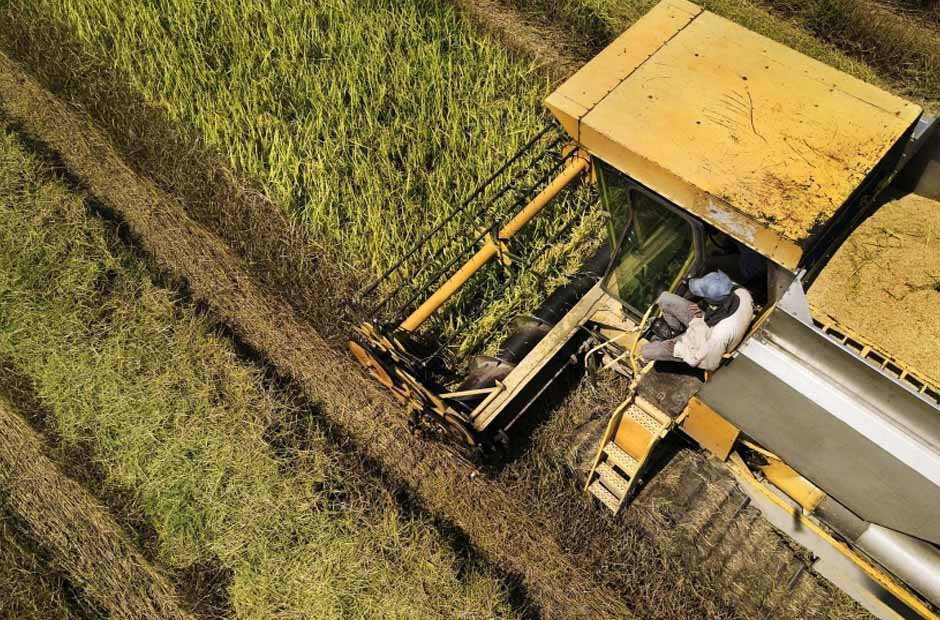The global call for sustainable and environmentally responsible agricultural practices has never been louder. As the world grapples with climate change, farming is facing increased scrutiny for its contribution to greenhouse gas emissions. However, innovative farms in Canada and the USA are leading the way in demonstrating that carbon-neutral farming is not just a possibility; it’s a success story waiting to be unveiled. In this article, we explore some of the remarkable initiatives and practices that are driving the shift towards carbon-neutral farming in North America.
The Imperative of Carbon-Neutral Farming
The agricultural sector plays a pivotal role in addressing climate change and carbon-neutral farming success. It is not only a significant contributor to greenhouse gas emissions but also a potential solution through carbon sequestration. Carbon-neutral farming aims to balance the carbon emissions produced with the carbon stored or removed from the atmosphere, resulting in a net-zero carbon footprint.
Key Reasons for Carbon-Neutral Farming:
- Reducing Emissions: Farming practices, such as enteric fermentation in livestock and synthetic fertilizers, release significant greenhouse gases. Carbon-neutral farming seeks to minimize these emissions.
- Carbon Sequestration: Innovative farming practices can enhance carbon sequestration, capturing and storing carbon in the soil and vegetation.
- Biodiversity Preservation: Sustainable farming often involves practices that promote biodiversity and protect ecosystems, contributing to carbon sequestration.
Carbon-Neutral Farming Success Stories
- Regenerative Agriculture
Regenerative agriculture is gaining traction in Canada and the USA. It’s a holistic approach that focuses on soil health, biodiversity, and reduced chemical use. By increasing the carbon content of the soil, regenerative farming helps store more carbon, effectively mitigating emissions.
- No-Till Farming
No-till farming involves leaving the soil undisturbed between planting seasons, which reduces carbon loss and enhances carbon sequestration. It also conserves moisture and minimizes erosion.
- Cover Crops
Farmers are increasingly adopting cover crops, which are planted primarily to manage soil erosion, control pests, and improve soil health. Many cover crops, such as legumes, can also fix nitrogen from the atmosphere, reducing the need for synthetic fertilizers.
- Precision Agriculture
Precision agriculture employs technology, data, and analytics to optimize farming practices. This approach reduces resource waste and emissions by ensuring that inputs, such as water, fertilizers, and pesticides, are used efficiently.
- Ranching Techniques
Innovations in ranching include rotational grazing, which mimics natural ecosystems and enhances soil health. Well-managed ranches can sequester significant amounts of carbon.
- Agroforestry
Agroforestry integrates trees and shrubs with crops or livestock. Trees not only sequester carbon but also provide additional income through timber and fruit production.
The Role of Technology
Technology is a driving force behind carbon-neutral farming. In Canada and the USA, farmers are harnessing innovation to enhance sustainability:
- Data Analytics
Farmers use data analytics to make informed decisions about planting, fertilizing, and irrigation. This results in precise resource use and reduced emissions.
- Carbon Capture Technology
Innovations in carbon capture and storage (CCS) technology allow farmers to capture carbon emissions from animal waste and convert them into energy or biochar.
- Biotechnology
Advances in biotechnology have led to the development of crops that require fewer resources and are more resistant to pests and diseases, reducing the need for synthetic inputs.
Government and Industry Initiatives
Government policies and industry initiatives in Canada and the USA are further driving the push for carbon-neutral farming:
- USDA Climate Solutions Program
The United States Department of Agriculture (USDA) has launched the Climate Solutions program, which offers financial incentives to farmers who adopt practices that reduce emissions and enhance carbon sequestration.
- Agricultural Sustainability Programs
Both Canada and the USA offer a range of sustainability programs that provide funding, technical support, and education to help farmers transition to carbon-neutral practices.
- Carbon Markets
Farmers can participate in carbon markets by selling carbon credits for their carbon sequestration and emissions reduction efforts. This provides additional income and incentives for sustainable practices.
Challenges and Future Outlook
While there are numerous successes in carbon-neutral farming, several challenges persist. These include the need for broader adoption of sustainable practices, financial barriers, and knowledge gaps. However, the outlook is positive. As consumers increasingly demand sustainably produced food, and as technology and funding support continue to grow, carbon-neutral farming is poised for expansion. The journey towards sustainability is no longer a vision but a thriving reality, as innovative farms in Canada and the USA demonstrate that a greener and more sustainable future is within reach.


